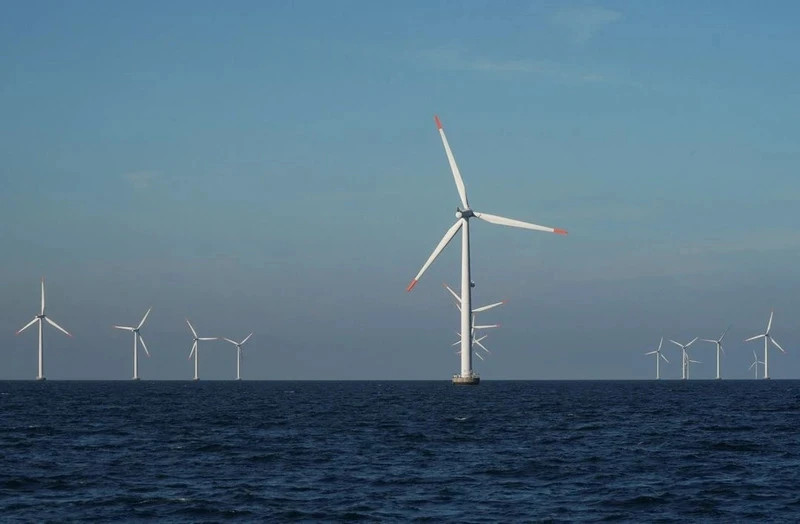According to Ember, renewable energy sources provided 30.3% of global electricity in 2023, up from 29.4% in 2022. This result was due to the rapid expansion of solar and wind energy projects.
The increase of solar power capacity has opened up opportunities for the world to achieve the goal of tripling renewable energy capacity by 2030, which was approved by more than 100 countries at the 28th Conference of the Parties to the UN Framework Convention on Climate Change (COP 28) in Dubai last year.
Renewable energy sources provided 30.3% of global electricity in 2023, up from 29.4% in 2022. This result was due to the rapid expansion of solar and wind energy projects.
In the "green energy picture" of 2023, China China was the most prominent as contributing more than 50% of global solar and wind power. Other powers also accelerated the energy transition process and achieved positive results.
In Germany, more than half of the electricity consumed by Europe's leading economy is from renewable energy, wind and solar power. According to the Federal Ministry for Economic Affairs and Climate Action, electricity output from renewable energy sources increased significantly in the first quarter of 2024 as reaching nearly 77 TWh, a year-on-year increase of 11%.
The proportion of renewable energy accounts for about 56% of electricity consumption. The approved projects of installing photovoltaic and wind energy systems have been increasing. Onshore wind power is the most important source of electricity, contributing 22% of electricity production. The number of installed solar power systems reached a record.
Belgium is also building the world's first offshore energy island called Princesse Elisabeth to connect wind farms in the North Sea with the mainland. This is a prime example of Belgium's innovation and commitment to renewable energy. Princesse Elisabeth island is an important step towards the transition to renewable energy in Belgium and Europe, reducing dependence on fossil fuels and combating climate change.
According to Ember, the continued growth of renewable energy can reduce electricity production using fossil fuels by 2% by 2024, thereby increasing the proportion of electricity produced from fossil fuels in total electricity generation below 60% for the first time.
The reduction of fossil fuel use and emissions in the power sector is critical to meeting global climate goals. The global power industry's dependence on fossil fuels has been gradually decreasing, contributing to the reduction of the industry's emissions. This change is a major milestone in the global transition to cleaner and more sustainable energy sources.
Committed to taking the lead in the fight against climate change, the US has completed a set of rules to address air and water pollution caused by emissions from power plants, thereby helping the country reduce more than 1 billion tonnes of emissions by 2047 even as electricity demand increases.
The new rules aim to cut carbon emissions from existing gas and coal-fired power plants, while updating and improving regulations to reduce mercury and other air pollutants as well as cleaning wastewater and preventing coal ash from spreading into the environment. This is considered part of President Joe Biden administration's efforts to respond to climate change.
However, Ember's report also points out challenges, especially grid connection and licensing for new renewable energy projects. Experts stressed the importance of efforts to overcome these barriers to achieve the goals by 2030. In addition, the finance sources for the energy transition is also an important issue. The world needs to mobilise more resources to realise the goals of climate change adaptation and sustainable development.
















